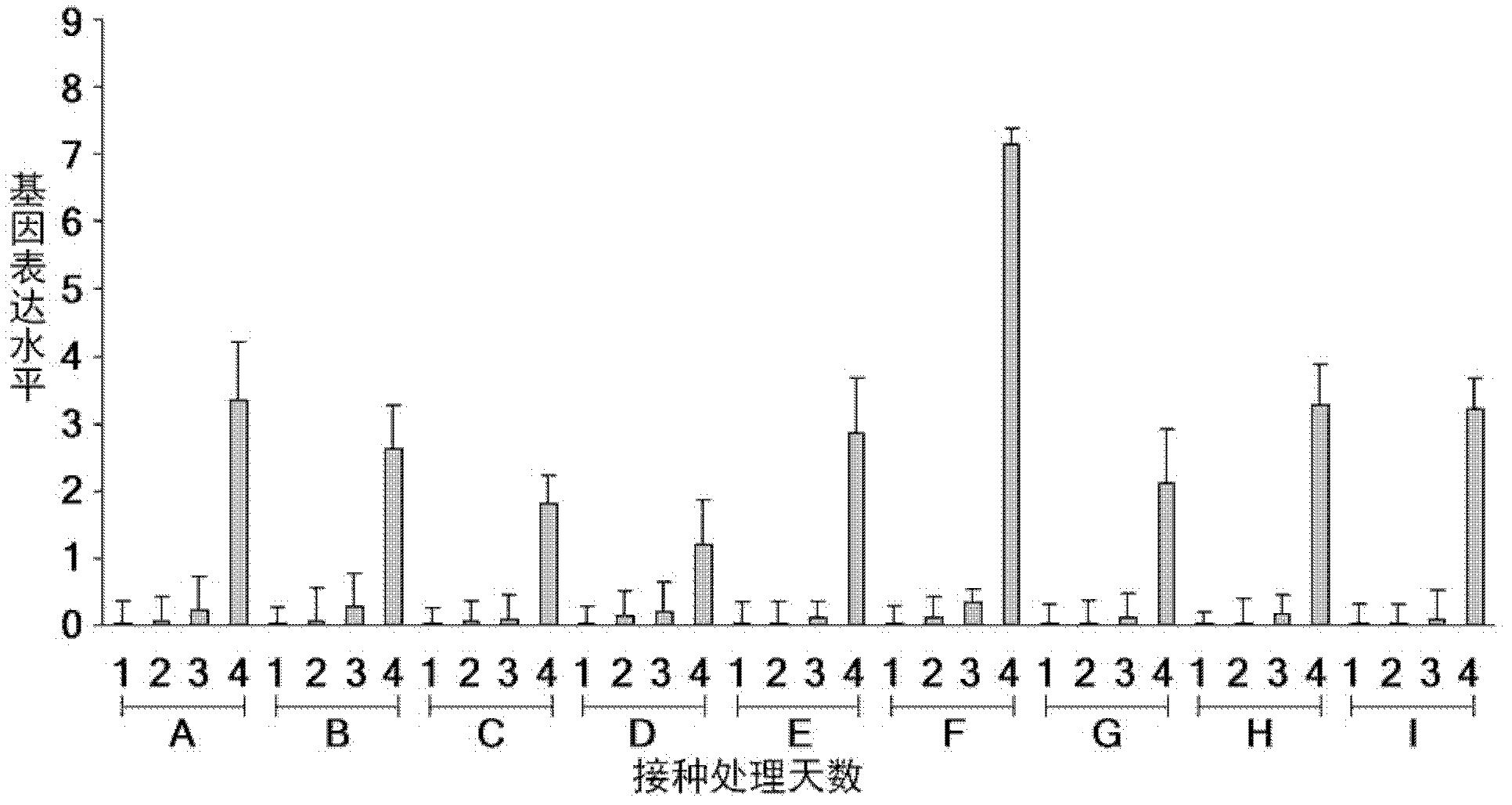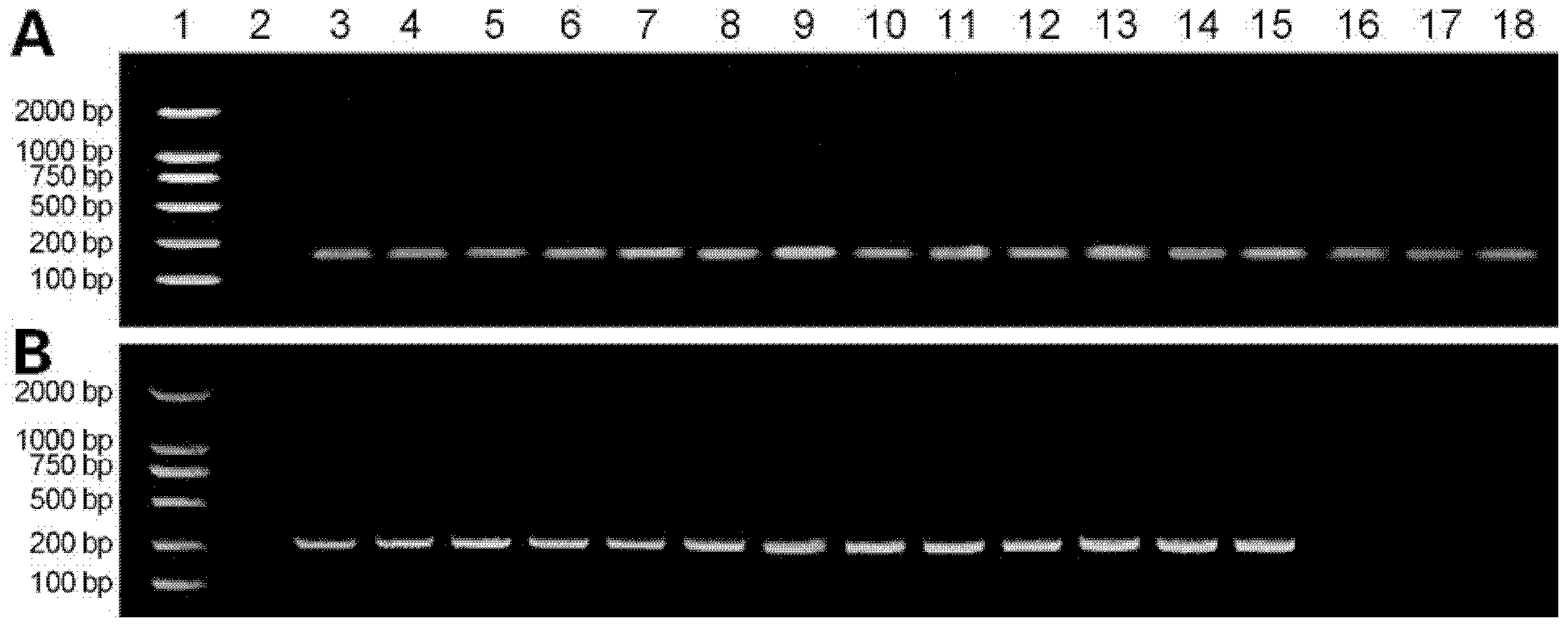Primer developed on the basis of pectin methylesterase Pcpme6 gene and used for detecting phytophthora capsici and method
A technology of pectin methylesterase and Phytophthora capsici, which is applied in the field of primers for detection of Phytophthora capsici, can solve the problem of detection and early warning of pathogenicity characteristics and occurrence trend of pathogenic bacteria, little control effect, and difficulty in controlling the occurrence and prevalence of diseases and other issues to achieve the effect of reducing the cost of disease prevention and control, blocking reproduction and spread
- Summary
- Abstract
- Description
- Claims
- Application Information
AI Technical Summary
Problems solved by technology
Method used
Image
Examples
Embodiment 1
[0028]Example 1. Acquisition of the primer pair Pme6F-R for specific detection of Phytophthora capsici and its specificity and sensitivity
[0029] In this embodiment, Phytophthora capsici is used as the test material, and the difference in RNA transcription expression level of these 9 gene members of Phytophthora capsici pectin methylesterase gene Pcpme 1-9 is detected in capsicum disease fruit according to qRT-PCR technology, compares Related data information, Pcpme 6 is defined as the target disease-causing gene, designs and synthesizes many pairs of specific primers of the Pcpme 6 gene (sequence 3), tests the specificity of these primers to all the tested bacterial species and the detection of Phytophthora capsici sensitivity. A pair of primer pair Pme6F-R with higher specificity and sensitivity was selected from it as the primer pair for specific detection of Phytophthora capsici, the upstream primer is Pme6F (20bp), and the sequence is 5`-CCGAAGTTAGCTGGACCGTT-3`; the dow...
Embodiment 2
[0110] Example 2, Pcpme 6 gene-specific primer pair Pme6F-R detects different diseased tissues and diseased field soil DNA PCR
[0111] This embodiment has tested the detection effect of Pme6F-R to Phytophthora capsici in diseased field soil, diseased stem, diseased fruit, diseased leaf, specific method is as follows:
[0112] 1. DNA extraction
[0113] Transfer Phytophthora capsici SD33 to a V8 solid plate, and after culturing in the dark at 25°C for 2-3 days, take a colony piece (2 mm × 2 mm) from the edge of the colony by blowing air, and inoculate the wound on pepper (Zhongjiao No. 6) seedlings (7- 9 leaves) at the base of the stem, fruit, and micro-wounds of bacterial blocks of the same size were inoculated on pepper leaves, and then different diseased tissues were cut out, and diseased tissues were extracted with reference to the NaOH method of Wang et al. (Nucleic Acids Research, 1993, 21:4153-4154) DNA of DNA: Take a section of diseased stem, diseased fruit and diseas...
PUM
 Login to View More
Login to View More Abstract
Description
Claims
Application Information
 Login to View More
Login to View More - R&D
- Intellectual Property
- Life Sciences
- Materials
- Tech Scout
- Unparalleled Data Quality
- Higher Quality Content
- 60% Fewer Hallucinations
Browse by: Latest US Patents, China's latest patents, Technical Efficacy Thesaurus, Application Domain, Technology Topic, Popular Technical Reports.
© 2025 PatSnap. All rights reserved.Legal|Privacy policy|Modern Slavery Act Transparency Statement|Sitemap|About US| Contact US: help@patsnap.com



